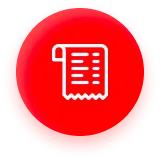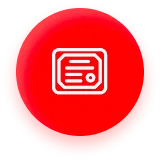
Precision-Driven Incentives for Complex Market in Medical Devices Industry
Overview
Challenges

Following stringent regulations and maintaining comprehensive, audit-ready records are critical.

Managing incomplete or disorganized data and complex territory structures requires a robust system that ensures accurate crediting and compensation.

The nature of high-value contracts and sophisticated product requirements extend sales cycles and intensify the sales process.

From initial contact to closing deals, diverse team roles must be aligned and incentivized to accurately reflect their contributions.

With multi-year deals, draws, and guarantees, managing incentives, especially with clawbacks and tiered accelerators, adds complexity to your compensation plans.
Common Data Sources Integrated
Typical Components in Medical Devices
Sales Compensation Plan

This is the total dollar value of products sold by a sales representative. Sales volume is the most important metric for paying incentives, as it directly relates to the company’s revenue.

This is the percentage of a sales rep or sales team’s sales quota achieved. Sales representatives or teams who consistently meet or exceed their quotas may be considered high performers.

This is the difference between the cost of goods sold and the revenue generated from selling those goods. Sales representatives who generate a higher gross margin may be eligible for higher incentives.

This is the percentage of total sales in a specific market or geographic area that a company holds. Sales representatives who increase their company’s market share may be eligible for incentives.

Sales representatives who open new accounts for their company may be eligible for incentives.

This is the percentage of a specific product sold within a given market or customer segment. Sales representatives who increase the penetration of their company’s products may be eligible for incentives.

Sales representatives or teams who retain existing customers for a certain period may be considered high performers.

Sales representatives or teams that generate leads successfully for the company may be considered high performers eligible for incentives.

This is the time for a sale to be completed from initial contact to close. Sales representatives or teams with shorter sales cycle times may be considered high performers.

This is the ratio of sales to expenses. Sales representatives or teams with high sales efficiency may be considered high performers eligible for incentives.
Why Incentivate Is the Right
Choice for You

Our platform seamlessly integrates with your existing ERP, CRM, and HRMS, ensuring that no data is siloed.

From advanced rule management to dealing with caps and negative balances, we make managing complex incentives straightforward.

Our dashboards provide deep insights into the effectiveness of your plans, while what-if calculators allow your sales team to forecast their potential earnings.

We understand that one size doesn’t fit all, especially in the medical devices industry. Our solutions are highly customizable to fit your company’s specific requirements.
